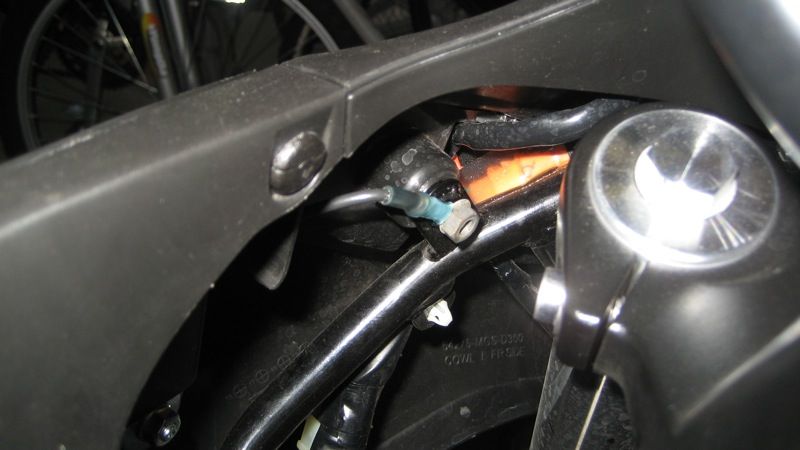Placing the relay is easy, since it's so small. The horn is the challenge. The obvious place is under the air intake cover, but I haven't been able to figure out how to remove the cover. Any help from you guys would be appreciated.
The other bit of information is the source of the relays, inline fuse holder, etc. I went to Amazon under the automotive category and searched for the NC-700 and also for motorcycle horns. One of those two should find the goods for you. These items were just a few dollars, so it's a very quick and easy place to order from.
Amazon is a good search location, because you may find other bike related stuff while you're looking. I've learned to look there first for almost everything and usually end up successful. And their return policy is second to none in my opinion, especially on more expensive items.
I think there is enough space under the right fake air duct. If you want to mount two of them, the left side is empty too. There is a push type trim clip on the inside of the triple clamp opening and there is one screw accessible under the luggage compartment lid. After these two are removed, slide the air duct rearward to clear the tabs. None of this stuff is NC-700 specific. They are common automotive parts. Another place where a single horn can be mounted is the stock horn location. I mounted one of my two Fiamms there (the high one). To tuck it in higher, I located the metal mounting strip behind the bolt that the original horn mounting strip was attached to by running a bolt through the front and putting a nut on the backside. It places it about 3/4" back and looks a bit neater. I pointed the bell downward.















